This may come as a surprise to some of you, but the Porsche Cayenne has been around for 15 years. While it may be a shining star in the German carmaker’s line-up today, it was a different story back in 2002 when the model first made its debut.
Some considered the Cayenne to not be very representative of the Porsche brand and that it wouldn’t have a decent take-up, yours truly included. However, the late Ferdinand Anton Ernst Porsche once said in 1989, “if we built an off-road vehicle according to our standards of quality, and it had a Porsche crest on the front, people would buy it.”
As it turns out, the son of the revered Ferdinand Porsche had his instincts proven right, with more than 760,000 units of the Cayenne sold since 2002. Should Ferry Porsche live long enough to see these results, the doubters (or haters for the more youthful) will likely be treated to the popular phrase “I told you so.”
The Cayenne has since entered its third generation (E3) as of August 2017, and it is being touted as a significant leap forward for the SUV. At a recent regional launch event for the model at the Sepang International Circuit, we got behind the wheel of a few units to find out if there’s any truth to the claims.
Indulge me for a little while as I try to explain the significance of the Cayenne. The 911 has always been the brand’s poster child and the fact that Porsche stuck to a rear-engined layout is a testament to the brand’s persistence to engineer something to the best it can be.
Even so, the company only managed to build one million 911s in the 54 years of its existence, but in just one and a half decades, the Cayenne has sold about three thirds of that figure. So, while the 911 gets all the glory, the Cayenne is the bread and butter. With that in mind, Porsche continuously ensures its SUV performs as close as possible to its other sports cars.
Like the 911, a few fundamentals continue to be maintained in the Cayenne from one generation to the next. Where keeping the engine in the rear was a staple for the sports car, the Cayenne must be able to deliver a perfect symphony of luxury as well as impressive driving dynamics both on- and off-road.
Thankfully, the day’s proceedings in Sepang allowed for a showcase of the Cayenne’s essential skills, which have now been boosted by a number of new technologies. At our disposal are two variants – the Cayenne S and Cayenne Turbo – with the latter being used for our first activity that takes us off-road.
As the range-topper, the Cayenne Turbo comes with plenty of bells and whistles starting with a 4.0 litre biturbo V8 engine at the front that is 0.8 litres smaller in capacity than what was used in the second-generation (E2) Cayenne Turbo.
Despite featuring a downsized power unit, it is more powerful with 550 PS (30 PS more than the E2) and 770 Nm of torque (20 Nm more than the E2). The mill comes paired with an eight-speed Tiptronic S automatic instead of a dual-clutch unit for better towing capacity, and the Porsche Traction Management (PTM) active all-wheel drive system.
On the Turbo, the chassis comes as standard with adaptive three-chamber air suspension for the Porsche Active Suspension Management (PASM) as well as a new Porsche Dynamic Chassis Control (PDCC). The second item consists of active front and rear anti-roll bars that each have an electric motor and gear set that help reduce body roll, and is completely decoupled when off-road to allow for better axle articulation.
Before setting off, we first have to dive into the car’s 4D Chassis Control by tapping on the 12.3-inch HD touchscreen that is also linked to the Porsche Communication Management (PCM) infotainment system. The interface serves as the access point to all chassis systems, including adjusting the air suspension to provide the highest possible ground clearance.
The first obstacle involves relying upon the Porsche Hill Control (PHC), which is essentially a hill descent control function that is simple to operate. Simply engage a set speed limit and the car will maintain said speed when descending down a steep hill. To aid with visibility, there’s an around-view monitor displayed on the big screen with a variety of modes and cameras to tap into.
Next up, we put the Cayenne’s axle articulation capabilities to the test, which was a little unsettling but was completed without a single car tipping over. On most occasions, we were told to keep the V8’s revs below the 2,000 rpm mark to allow the PTM system to efficiently distribute torque accordingly for maximum grip, including during a V-gulley crossing.
Finally, we tried navigating over some pretty high dirt mounds and rocks to maximise the 268 mm of ground clearance that is available. As you can tell from the photos, there’s quite a bit of suspension travel during the exercise which made for some pretty dramatic photos.
You might be thinking who in their right mind would want to subject their Porsche to such terrain, and most buyers in Malaysia would certainly prefer to stay on the tarmac. However, to know that Porsche didn’t compromise the Cayenne when it comes to dealing with off-road situations is pretty commendable.
Getting back on track (pun intended), the same cars we just drove off-road then had their tyres cleaned and we were ready to experience another new addition to the Cayenne arsenal – the Porsche Surface Coated Brake (PSCB).
By default, the base Cayenne and Cayenne S come with cast iron brake discs with six-piston calipers, but there are two options available. The first is the familiar Porsche Carbon Ceramic Brakes (PCCB) and the other is the new PSCB – standard on the Cayenne Turbo.
Why bother with a new braking system? Well, Porsche recognises that some customers do require higher levels of braking performance but still want to head off-road as well. However, with the PCCB, sand and tiny stones can accumulate within the small holes of the cross-drilled ceramic brake discs and ruin their functionality.
The PSCB fills that gap by applying a 100-micron thick tungsten carbide surface on a regular cast iron brake disc. This not only gives it a mirror-like finish, but toughens the disc surface to ensure better longevity, friction and more importantly, consistent braking force even at high temperatures when the 10-piston calipers clamp down.
The Cayenne is the first model to be offered with PSCB, but other Porsche models will be offered with it in the future. In practice, the brakes work as advertised, reliably bringing the over two-tonne (2,175 kg) vehicle to a stop repeatedly without diminished performance.
Other upsides of the PSCB include a lower amount of brake dust generation, as the accompanying white calipers certainly appear to suggest. The only downside here is the PSCB doesn’t offer the same level of weight savings (24 kg) as the PCCB that is identified by yellow calipers.
Our introduction to the Cayenne’s new features continued with a slalom handling course meant to demonstrate the SUV’s new rear-axle steering. We first had a go on the course in a Cayenne without four-wheel steering, where navigating through the course didn’t require a whole lot of steering angle thanks to a quicker 13.3:1 steering ratio.
With rear-axle steering, the Cayenne’s rear wheels turn opposite the fronts for better manoeuvrability at low speeds, and turn in sync at high speeds for stability. Suffice to say, the difference between the two cars were pretty noticeable, as the car with the system felt more agile and required even less effort at the steering wheel. The system also introduces a lower 12.2:1 steering ratio.
The final activity in the day’s programme was a guided lap around SIC, which allowed for other features to be experienced. For our time on track, we swapped the Cayenne Turbo for the Cayenne S, which packs a 2.9 litre biturbo V6 with 440 PS and 550 Nm of torque (shared with the Panamera). It may be less powerful than the Turbo but it’s still no slouch with a century sprint time of 5.2 seconds (4.9 seconds with the Sport Chrono Package) and 265 km/h top speed.
The E3 also marks the first time mixed tyres widths are used for the model (already present with the Panamera and 911), where the rear tyres are wider than the fronts. On the Cayenne S, the front rims are wrapped with 285/40 series tyres, while the back gets 315/35 series one instead. This setup is meant to improve rear grip levels and work with the car’s quicker steering ratio(s).
Departing from SIC’s south paddock onto Turn 14, the PDCC, which was inactive during our off-road excursion, kicked into action to help minimise body roll. In a corner, one side’s control arm will want to move up more than the other side, resulting in body roll. Porsche’s solution relies on the swivel e-motor to apply positive or negative tension on the anti-roll bars to keep the Cayenne cornering flat.
Unlike the previous-generation’s electro hydraulically-actuated system, the one available for the new Cayenne operates on a 48-volt system – part and parcel of being underpinned by the Volkswagen Group’s MLB Evo platform that is also used for the latest Panamera, Audi Q7 and Bentley Bentayga. The advantage here is a quicker response time than before, and you can also see the system work in real time on the right side of the Porsche Advanced Cockpit.
Charging down the main straight was a good exercise for the V6, and although it wasn’t the most aurally satisfying of engines, there’s no denying the pace it can provide. Braking hard for Turn 1 is a reminder that despite being 65 kg lighter than the previous generation Cayenne S, the new car still tips the scales at 2,020 kg, and the laws of physics when it comes to slowing down still apply.
Applying a constant throttle when taking on Turn 1 and 2 allowed the Porsche Torque Vectoring Plus (PTV Plus) system to go to work, where an electronically-controlled rear differential lock with a wet multi-plate clutch actively distributes torque between the wheels that have the most grip.
You can feel it working as you try to force the issue by applying more throttle than needed mid-corner, with the system doing its utmost best to delete understeer and oversteer in order to maintain trajectory. At times, it will even apply the brakes on the left or right wheel if more pivoting is required.
On a related note, the on-track experience with a less kitted out example, one without PDCC, did result in more profound weight shifts when cornering. However, it’s certainly quite impressive that an SUV is capable of providing such a dynamic experience, especially the one with all the goodies.
With all said and done, are there any drawbacks? Well, the design may not have undergone a radical change so if you liked the previous one, the evolutionary updates should be appealing to you. Beyond that, first impressions of the new Cayenne are good and it makes sense to me why so many people bought into the model.
As an SUV, it can still be the practical runabout vehicle for your day-to-day errands and the occasional furniture packing. However, given we’ve only tested it on the track, we won’t comment much about living with one on the daily.
As a driving experience, it feels almost like a performance sedan but with the advantage of being able to head beyond paved roads too. Truly the best of many worlds, the third-generation Cayenne represents a big step forward for a model that continues to defy conventions and naysayers – a complete machine. In the past, I thought the Cayenne wouldn’t amount to much, so please excuse me as I treat myself to a nice piece of humble pie.
Looking to sell your car? Sell it with Carro.

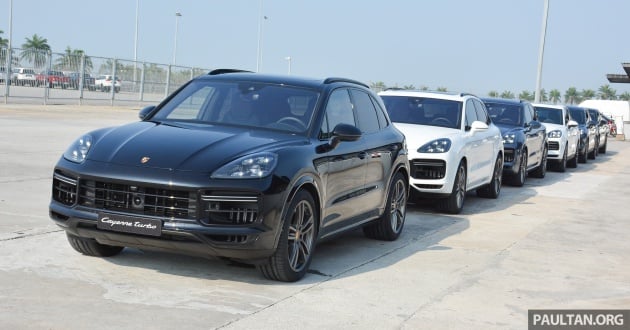
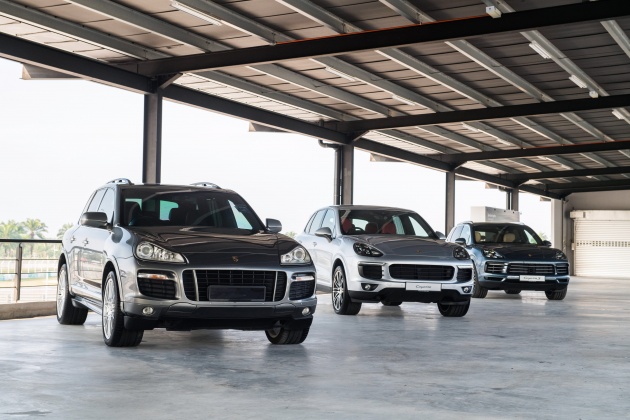
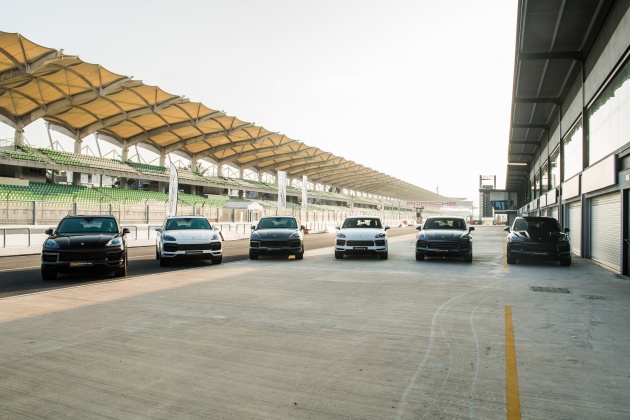












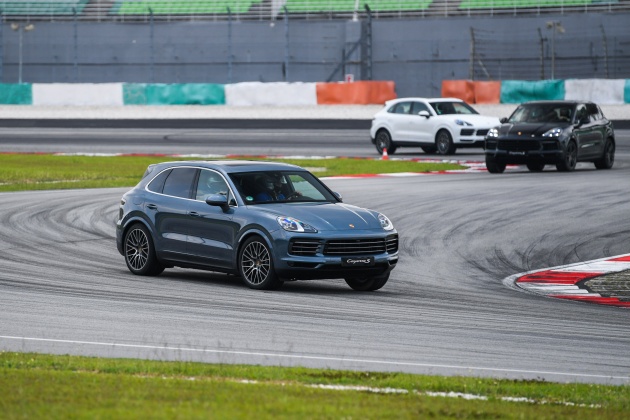
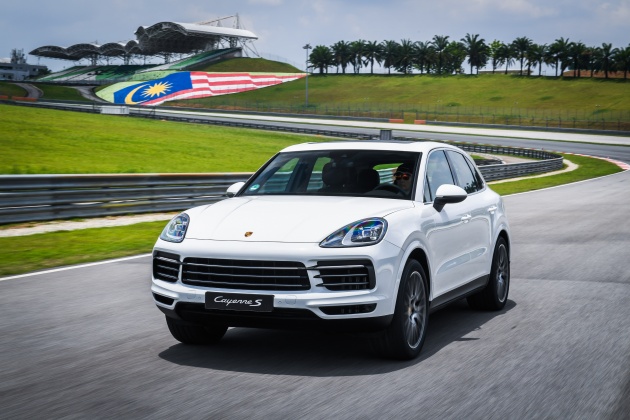
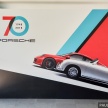
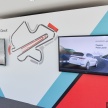
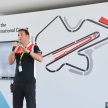
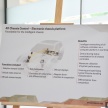
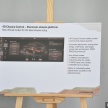
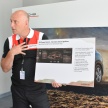
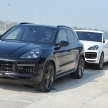


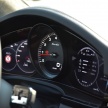

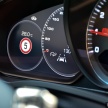
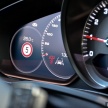
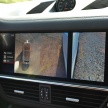
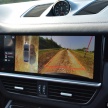

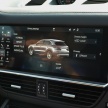
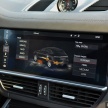
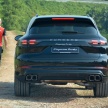
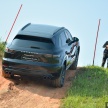
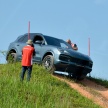
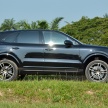
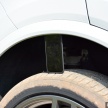
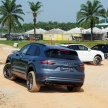
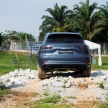
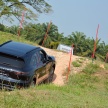
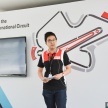
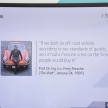

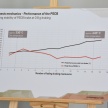
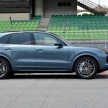
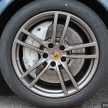
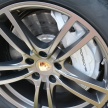
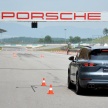

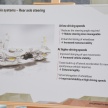
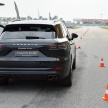


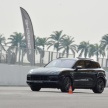
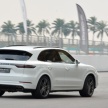

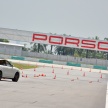
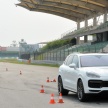
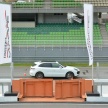

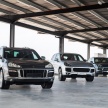
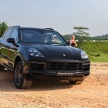
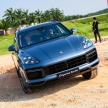
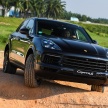
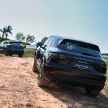
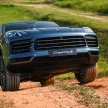
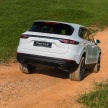
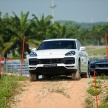
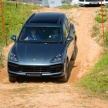
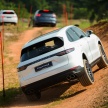


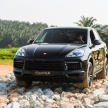
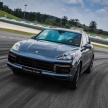

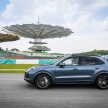

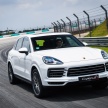
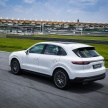
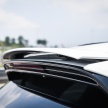


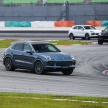
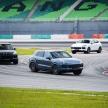


Honda Prelude already had 4 wheel steer back in the 1988. An ingenious complex mechanical system using zero electronics.